Multiple grants for innovative research in the Cyber-Physical Systems Center
More than 2.5 million euro awarded for innovative research in the Cyber-Physical Systems Center, creating ten new temporary positions.
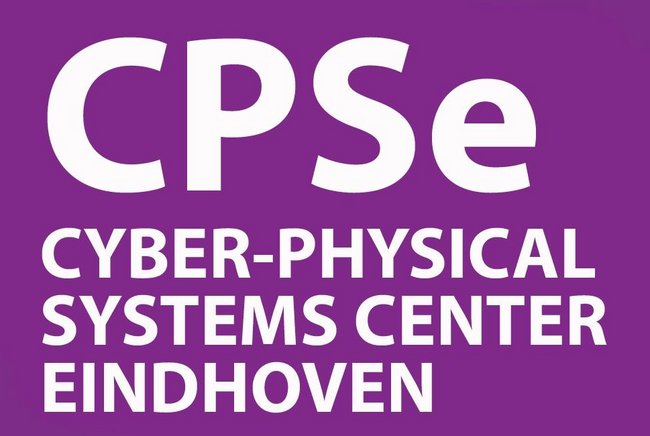
Cyber-Physical Systems (CPS) form one of the primary focus areas of the Department of Electrical Engineering at TU/e. CPS will form the pivotal technology in a connected world of systems delivering services around public health, education, fossil-free energy and transport, that will profoundly change our daily lives. The CPS focus area is materialized in the Cyber-Physical Systems Center Eindhoven (CPSe), targeting the symbiosis of physical systems and smart computation. The Center is organized as a lean support organization within the Department of Electrical Engineering. It leverages expertise in Control Systems (CS), Electronic Systems (ES), Electrical Energy Systems (EES), and Electromechanics and Power Electronics (EPE) with respect to research, funding and valorization in the strategic application domains High-Tech Systems, E-Grids, and E-Mobility.
In the past year CPSe was bootstrapped and today already 18 scientists are affiliated with the center, in addition to three program managers, a secretarial office and a scientific board. Since its birth, the center has been supporting scientists with research propositions, cross-disciplinary collaboration, project acquisitions, consortium forming and external visibility.
All these efforts so far have paid off; CPSe has been involved in 19 research proposals of which 10 got granted - a success rate of more than 50%. The center did particularly well in the last ECSEL JTU call (https://www.ecsel.eu/calls/calls-2020); CPSe managed to get involved in 4 out of the 14 EU proposals that were granted in total! This corresponds to 2.5 M€ of subsidy for CPS research and 10 new temporary research positions. Details about the granted projects and their principal investigators are found below.
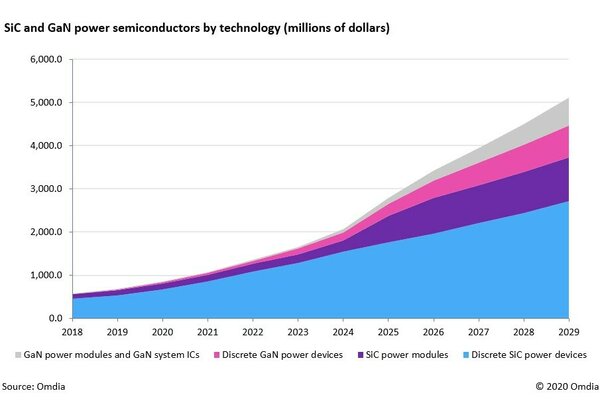
GaN4AP – GaN-based electronics for advanced power converting systems
The GaN4AP project has the challenging goal of making Gallium-Nitride (GaN)-based electronics become the main technology for active devices in all power conversion systems. A pervasive usage of GaN electronics will allow the possibility of developing close-to-zero energy-loss power electronic systems, an objective that is perfectly in line with the Energy Efficiency Directive (2012/27/EU) of the European Commission that literally mentions the following “… making better use of energy – through organizing and modernizing our buildings, energy and transport systems and industrial processes, kick-starting the energy efficiency market, using new services, technologies, materials and financing instruments and promoting behavioral change”. Concretely, the GaN4AP project targets the development of innovative Power Electronic Systems, the development of innovative material, the development of a new generation of vertical power GaN-based devices, and the development of new intelligent and integrated GaN solutions (STi2GaN) both in System in Package (SiP) and Monolithic variances. The development of these new device technologies and innovative power circuits, employing the GaN-based devices, is a crucial factor for the world-wide competitiveness of EU industries. The support of the research activities in this project will allow us to lay the foundation for the manufacture of the next-generation power electronic technology in Europe and in the world.
Power conversion is a crucial aspect for the CPSe programs on E-mobility, E-Grids and High-Tech Systems. To achieve the objectives of GaN4AP, TU/e collaborates with NXP. Together with the project partners the main challenge that TU/e will tackle is to broaden the application spectrum of gallium-nitride semiconductor technology by innovative power electronics that increase the operating voltage range above the usual 650V breakdown limit. This allows GaN-technology to be used in for instance common three-phase grid systems, such as electric vehicle battery chargers and amplifiers in medical imaging systems. PI in this program is dr. ir. Bas Vermulst.
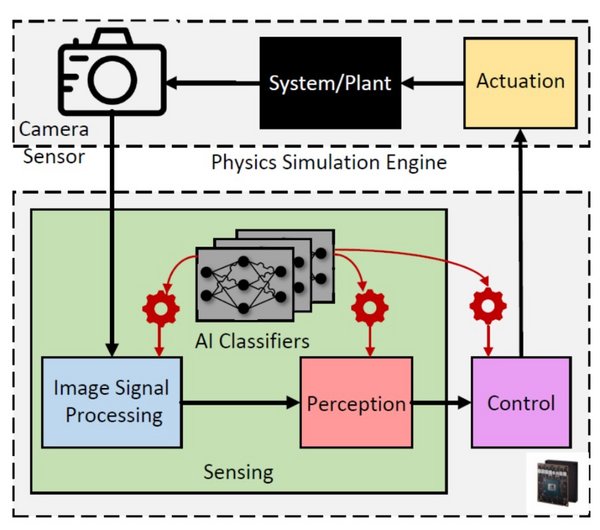
IMOCOE.4 – Efficient image-based control with embedded AI solutions
IMOCO4.E targets to provide vertically distributed edge-to-cloud intelligence for machines, robots and other human-in-the-loop Cyber-Physical systems having actively controlled moving elements. They face ever-growing requirements on long-term energy efficiency, size, motion speed, precision, adaptability, self-diagnostic, secure connectivity, and new human-cognitive features. The program strives to perceive and understand complex machines and robots. The two main pillars of the project are digital twins and AI principles (machine/deep learning). These pillars build on the I-MECH reference framework and methodology, by adding new tools to Layer 3 that delivers an intelligible view on the system, from the initial design throughout its entire life cycle. For effective employment, completely new demands are created on the Edge layers (Layer 1) of the motion control systems (including variable speed drives and smart sensors) which cannot be routinely handled via available commercial products.
IMOCO4.E aims to deliver a reference platform consisting of AI and digital twin toolchains and a set of mating building blocks for resilient manufacturing applications. The optimal energy efficient performance and easy (re)configurability, traceability and cyber-security are crucial. The IMOCO4.E reference platform benefits will be directly verified in applications for semicon, packaging, industrial robotics and healthcare.
The development of CPS that can connect simulated intelligence and digital twins to the real world in real time is key to CPSe. To achieve these objectives CPSe collaborates with SIOUX CCM, Electromagnetic Compatibility MCC, TNO, REDEN, NEXPERIA and PHILIPS medical systems, consumer lifestyle and electronics. TU/e will focus on low-power edge devices, vision-in-the-loop motion control layers, and guaranteeing hard real time constrains. PI’s in this program are dr. Dip Goswami, dr. ir. Sander Stuijk and prof. dr. Kees Goossens.
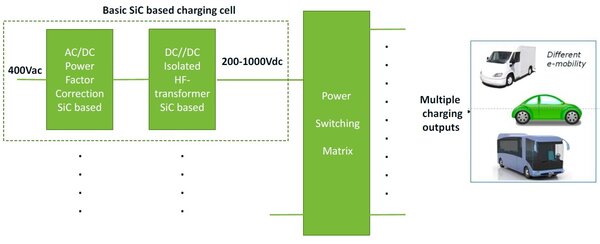
HiEFFICIENT - Next generation wide-bandgap semiconductors for smart mobility
The European ‘Green Deal’ initiative by the EU commission strives for sustainable mobility and efficient use of resources. Within HiEFFICIENT the project partners will work towards these goals and will develop the next generation of wide-bandgap (WBG) semiconductors in the area of smart mobility. Today, the applicability of WBG semiconductors in electrified vehicles has been demonstrated, but only one a few manufacturers are making use of these devices, especially of Silicon Carbide (SiC) but less so for Gallium Nitride (GaN). To boost this development and the market introduction in automotive applications, HiEFFICIENT partners have set the ambitious goals to achieve a reduction in volume of 40%, increase efficiency beyond 98% and increase reliability of wide-bandgap power electronic system to ensure a lifetime improvement of up to 20%.
To accomplish the targeted goals, the partners will work on industrial use-cases to demonstrate the key achievements and the progress that goes beyond state-of-the-art. This includes, amongst others, modular inverters with different voltage levels (such as 48 V, 400 V), flexible on- and multi-use off-board chargers for different voltage levels, multi-purpose DC/DC converters and test systems for power electronics’ lifetime testing. These use cases are led by OEMs and other industrial partners, who define requirements and specifications for the envisioned systems.
The HiEFFICIENT goals are key to the electrification of mobility and will contribute to the development of the E-Mobiliy program in CPSe. These goals are achieved with partners Heliox, TNO, and Lightyear. Together with these partners, TU/e will work on multi-use DC chargers and a highly integrated e-Powertrain. TU/e will be involved in the application of WBG devices which enable high switching frequencies and steep rising edges (dv/dt), as well as high voltages. PIs in HiEFFICIENT are dr. Jorge Duarte and dr.ir. Henk Huisman.
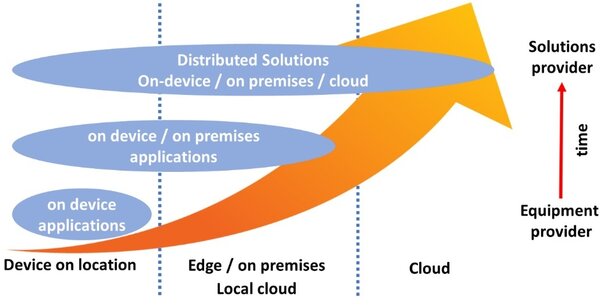
TRANSACT – Transform safety-critical Cyber Physical Systems into distributed solutions for end-users and partners
Cyber-physical systems are all around us, but due to today’s technical limitations and human error we cannot yet tap into their full potential. A more integrated and connected architecture for such systems via edge and cloud technologies could overcome these limitations. If we could transform the current stand-alone systems into systems with a safe and secure device-edge-cloud distributed architecture, we would truly unlock their full potential. The consortium feels strengthened in its ambition by current market trends that show advanced usage of safety-critical systems with novel services based on smart data analytics improving functionality and safety, e.g. by remote monitoring, and enabling access to crucial (off-device) information.
The overarching goal of TRANSACT is therefore to develop a universal distributed solution architecture for the transformation of safety-critical cyber-physical systems from local, stand-alone systems into safe and secure distributed solutions. To that end TRANSACT will leverage edge and cloud eco-systems to lower CPS’ cost and increase their pace of updates and improvements of applications and solution-oriented services. TRANSACT will strengthen Europe’s competitiveness in cyber-physical systems by advancing their capabilities with novel services based on smart data analytics, allowing system manufacturers to transform into solution providers.
TRANSACT developments are a crucial next step to a connected world of cyber-physical systems and as such are key research to CPSe. The program objectives will be achieved in joint effort with Philips Medical Systems, PS-Tech B.V, ViNotion B.V. and TNO. The focus of the TU/e will be on model-based prediction and management of timing performance in distributed edge/cloud platforms to guarantee safety. PIs are dr.ir. Marc Geilen, dr. Mitra Nasri, prof.dr.ir. Twan Basten and prof.dr.ir. Jeroen Voeten.